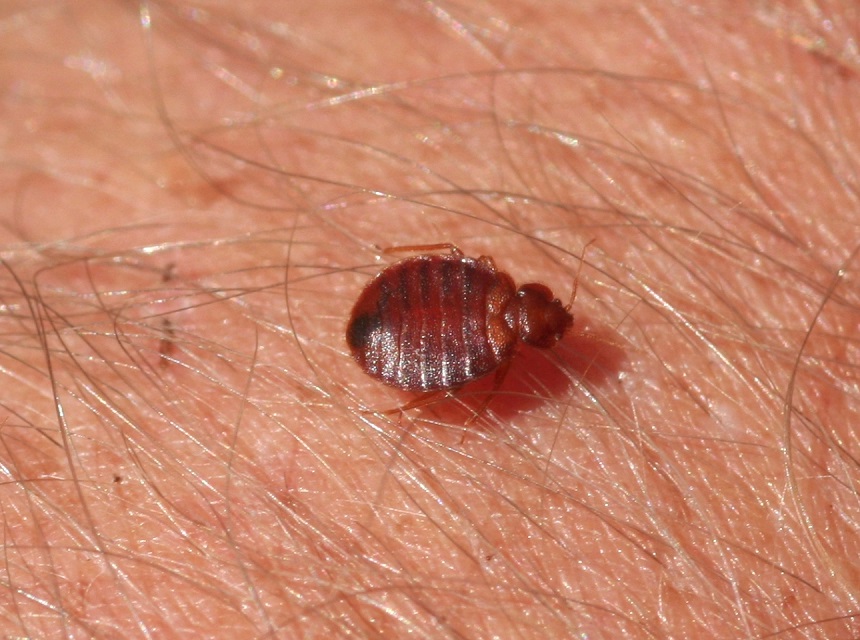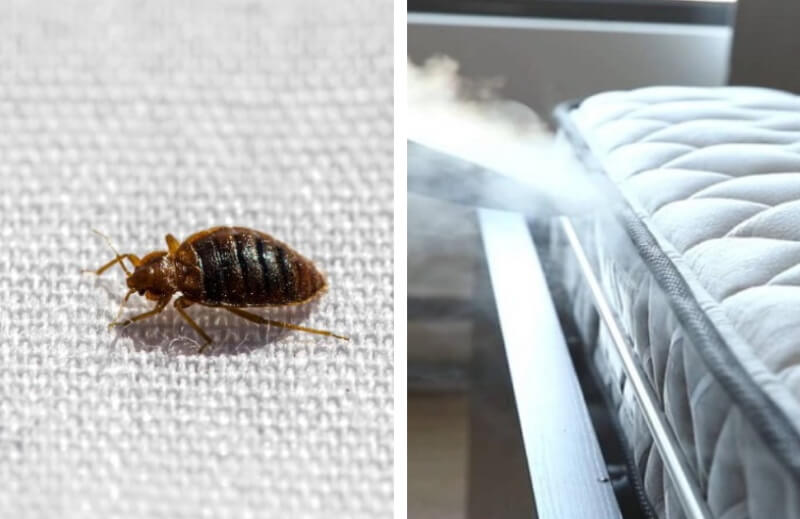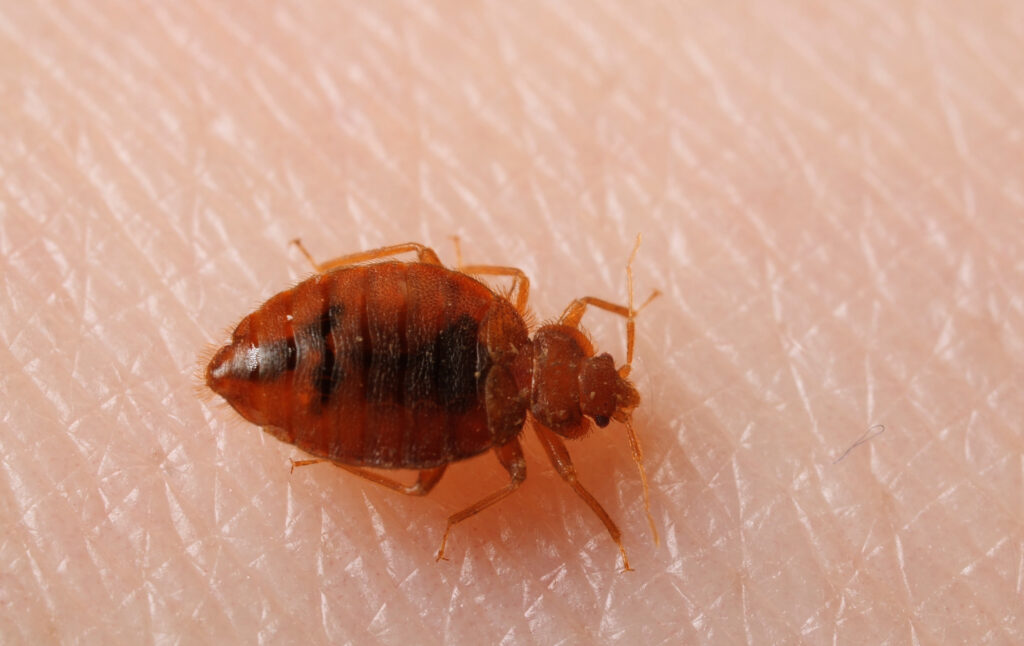

Bed bugs are tiny little creatures that infest a home before those living there even know there is a problem. The issue is that many people don’t know how the infestation started in their homes in the first place, so the pests are out of hand before the first bug is seen. So, how do bed bugs spread from house to house?
Well, unfortunately,
bed bugs travel from home to home
Trusted Source
Chainsaws, fire and paranoia: my total bedbug meltdown - The Guardian
Over time, I began to notice that the scarier stories on the show have an uncanny tendency to include these insect parasites. It’s typical of someone to start with a line like, “The summer my mom died, my career collapsed. But the worst part was getting bedbugs.”
This recurring theme got me worried – and they say worrying is like praying for what you fear.
www.theguardian.com
with little effort. They are carried right into a new home in furniture, clothing, and other items. Quite often, the people carrying the bed bugs don’t even know they are there until it’s too late and the infestation has traveled to other rooms, apartments, and buildings.
To avoid bed bugs taking over your home, check out the following sections for more information on how these little pests move and spread. We’ll also go over prevention tips to help you keep your home bed bug-free.
Though you may believe that bed bugs get into your home due to cleanliness or messes, this isn’t actually the case. The cleanest homes can also get an infestation of these nasty little pests. This is because the state of your home isn’t the cause of bed bugs. Instead, it’s what you bring into your home that lets these little beasts in.
One way bed bugs get into your home is from traveling. If you stay in a hotel, motel, or hostel that has bed bugs in at least one room, you risk these bugs getting into your clothing and luggage and coming home when you do.
You likely won’t even know that you’ve picked up an unwanted traveler until it’s too late and they have spread throughout your bedroom and possibly the rest of your home.
Those who like to browse secondhand or antique shops for those interesting, unique, and inexpensive items may also be bringing an unwanted surprise home with their purchased items. Bed bugs often live in furniture, so if the shop isn’t aware of them, not only will that particular item contain these pests, it’s only a matter of time before they spread to the rest of the store and to every home a purchased piece ends up in.
People who already have bed bugs may be spreading them from house to house as well. The bugs attach themselves to a person’s clothing or shoes and come right in with your visitors. Once the person is inside, the bugs wander off and make themselves at home.
If you’ve never seen a bed bug, and even those who live with them may not have laid eyes on one of these pests, you may not know what to look for. They are quite small and hard to spot since they don’t usually hang out in the open, though they are easy to identify if you know what to look for.
The bugs themselves are only about a quarter of an inch long. This is about the same size as an apple seed, so you likely won’t spot them unless they are close to you. These bugs are long and flat, with an oval shape and brown to reddish-brown coloring in older bugs. The younger ones are smaller and translucent, with a milky-white color, as are the eggs. Bed bugs also have two antennae and six legs.
Bed bugs can be hard to spot, so you may need to identify whether they are in your home by looking for the traces these pests leave behind. These can include reddish or rusty stains on your bedding mattress, or clothing, which are caused when the bed bugs are crushed.
There could also be dark spots on your bedding or clothing. These will be tiny dots the size of a poppy seed and are caused by the feces these bugs excrete.
Other signs of bed bug infestation include the small yellow skins that these bugs shed as their bodies grow or a musty smell around your bed or in piles of clothing. If you notice small, swollen, red bites on your skin with no obvious cause, these could also be a sign of bed bugs. These bites may take up to 14 days to show up after you’ve been bitten, so if you spot them on your body, taking immediate action is a must to eliminate the infestation and prevent it from spreading.
To help prevent bed bugs from spreading throughout your home, you may want to learn what attracts them. These bugs feast on a person’s blood, so they like to live where people are. They are also called bed bugs because they like to hide in mattresses, box springs, bed frames, and bedding. These give them warmth, carbon dioxide, and access to their favorite meal.
Bed bugs also like to frequent areas with foot traffic because this allows them to attach to a person and be carried to other areas much faster than they could on their own. This lets them spread out and take over a larger area in less time.
Other areas you may find bed bugs are in furniture, drawers, curtains, wallpaper, and appliances. Bed bugs can wedge themselves into small areas as well, like ceiling and floor cracks or electrical outlets. In fact, they can live almost anywhere, as long as people are nearby to nibble on. They are most active at night, which is why they prefer bedding over all the other areas of your home since you are the easiest to feast on while you’re immobile and sleeping.
Bed bugs can spread from apartment to apartment in one building the same way they spread through a house. Apartments are only separated by walls and ceilings or floors, so the bugs can fit through any cracks or crevices and move from one home to another. They can also travel through pipes that interconnect the apartments, so they can spread from one to several others in very little time.
Though bed bugs aren’t as mobile as flying insects, they do have six legs, which allows them to crawl rather quickly from room to room. In fact, they can crawl about 3 to 4 feet every minute, depending on the surface they’re moving about on. This makes it easy for them to spread from room to room in your home, expanding their infestation in a matter of days. They can also tuck themselves into any small crack or space and are most active at night, so you likely won’t even see them moving around your home until it’s too late.
Bed bugs also get into your clothing and shoes, which helps to transport them to other areas of your home even faster than they can on their own. Putting on an item of clothing with even one-bed bug on it, heading to your living room, and sitting on your couch can make it easy for the bed bug to climb off of you and slip between the cushions, making a brand new home for itself.
They can also get through the cracks in the walls between rooms, which is the fastest way for them to spread their infestation throughout your house.
Whether you are concerned that you will bring bed bugs into your home or that your visitors may have some unexpected additions to their group when coming over, there are a few things you can do to minimize the risk of an infestation.
To avoid bringing bed bugs into your home, there are a few things you can do to reduce the chances of a nasty pest problem. The first is to keep your bedroom as clean as possible, with little clutter for the bugs to accumulate in. You can also add a protective cover over your mattress and box spring to keep them from getting into these areas.
Sealing any cracks or crevices in your walls to keep any bugs from moving to a new area of your home is another method to keep any bugs contained as much as possible. You can also use bed bug powder in those cracks, as well as other areas of your home, to get rid of any you may not be able to see. Vacuuming regularly can also help minimize any infestations.
Though you may love a good deal, you may want to avoid purchasing any secondhand furniture. If it’s a piece that you really want, be sure to check it thoroughly for any bed bugs or their signs before bringing used items into your home.
You may also want to take some precautions when traveling to avoid bringing the pests back home with you. The first thing to do is inspect the room for any bed bugs or their signs before unpacking. Use a bag stand or place your luggage on a table or dresser rather than leaving it on the floor or the bed. You may also want to try out a bed bug trap while traveling. The Ortho Home Defense Max is a popular choice that can be used at home or on the road since it detects and lures the bugs in if they are present and remains empty if there are no bugs in the area.
When returning home, immediately wash your clothing in the hottest water possible and then place every item you can in the dryer, again on the highest heat setting you can. You can also place many travel or home items in a bed bug heater to help kill any bugs that you may have missed. Users love the ThemalStrike Ranger Bed Bug Heater, which includes a dry-heat decontamination cycle and can kill these bugs at all of their life stages, plus it can hold most luggage sizes.
If you’re concerned about guests, you can keep their coats or other outdoor items in a closet, away from your own clothing items. You can also use a mat for their shoes and place slipcovers over your furniture, both of which can be laundered after your guests have gone home. Avoid letting those who have confirmed a bed bug outbreak in their homes inside your house unless necessary and clean everything they bring in thoroughly to be sure no bugs are escaping into your home.
Bed bugs can be a nuisance, even with a small infestation in your home. They are sneaky little pests that can enter and spread before you even know they are there. Taking precautions to avoid the possibility of bringing even one of these bugs into your home is a must, which is why many people wonder: how do bed bugs spread from house to house?
Learning what they look like, where they like to live, and how they travel is the first step. After that, being extra careful when purchasing used items, traveling, and letting others into your home are the best methods to keeping your home pest-free.





